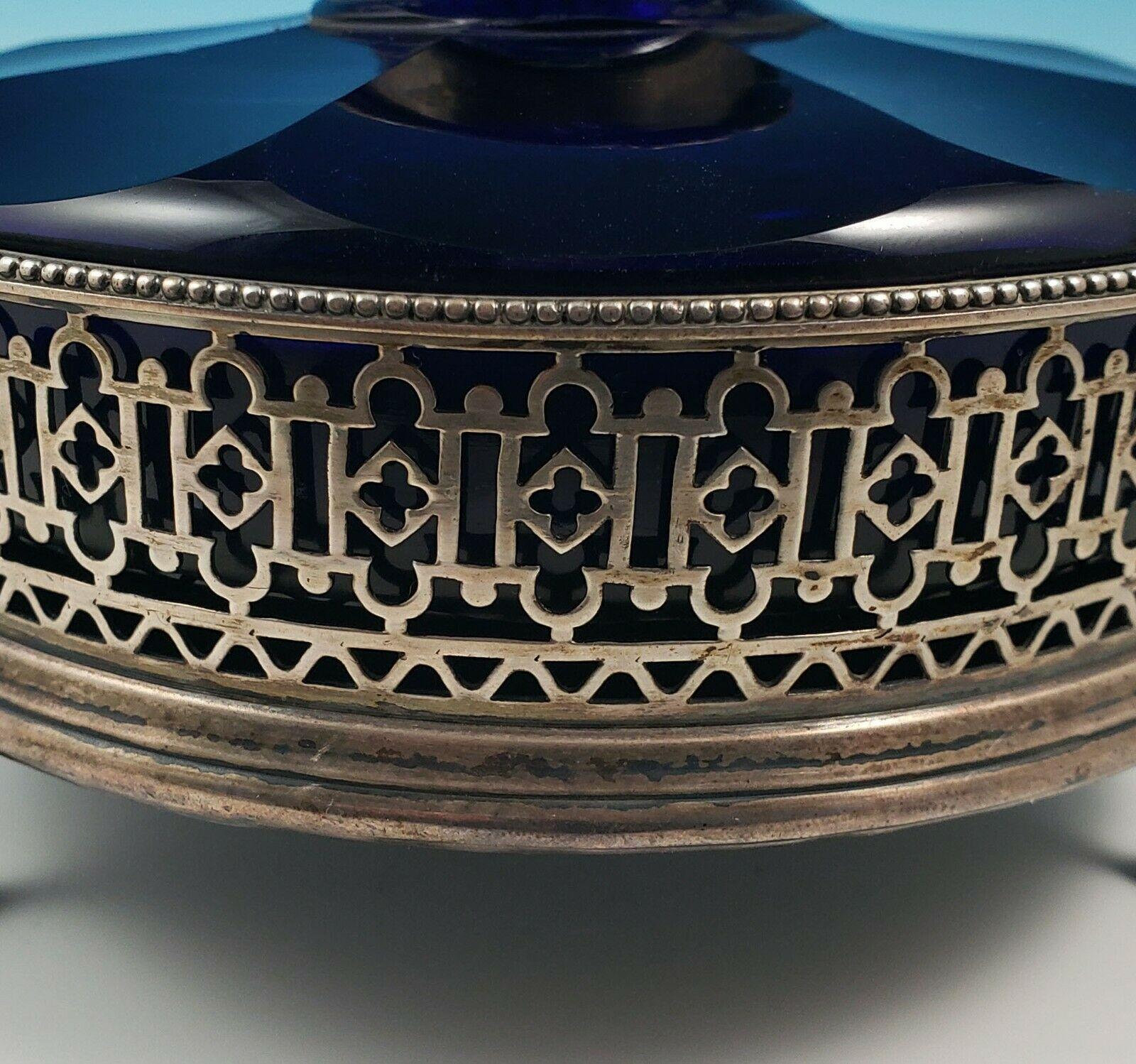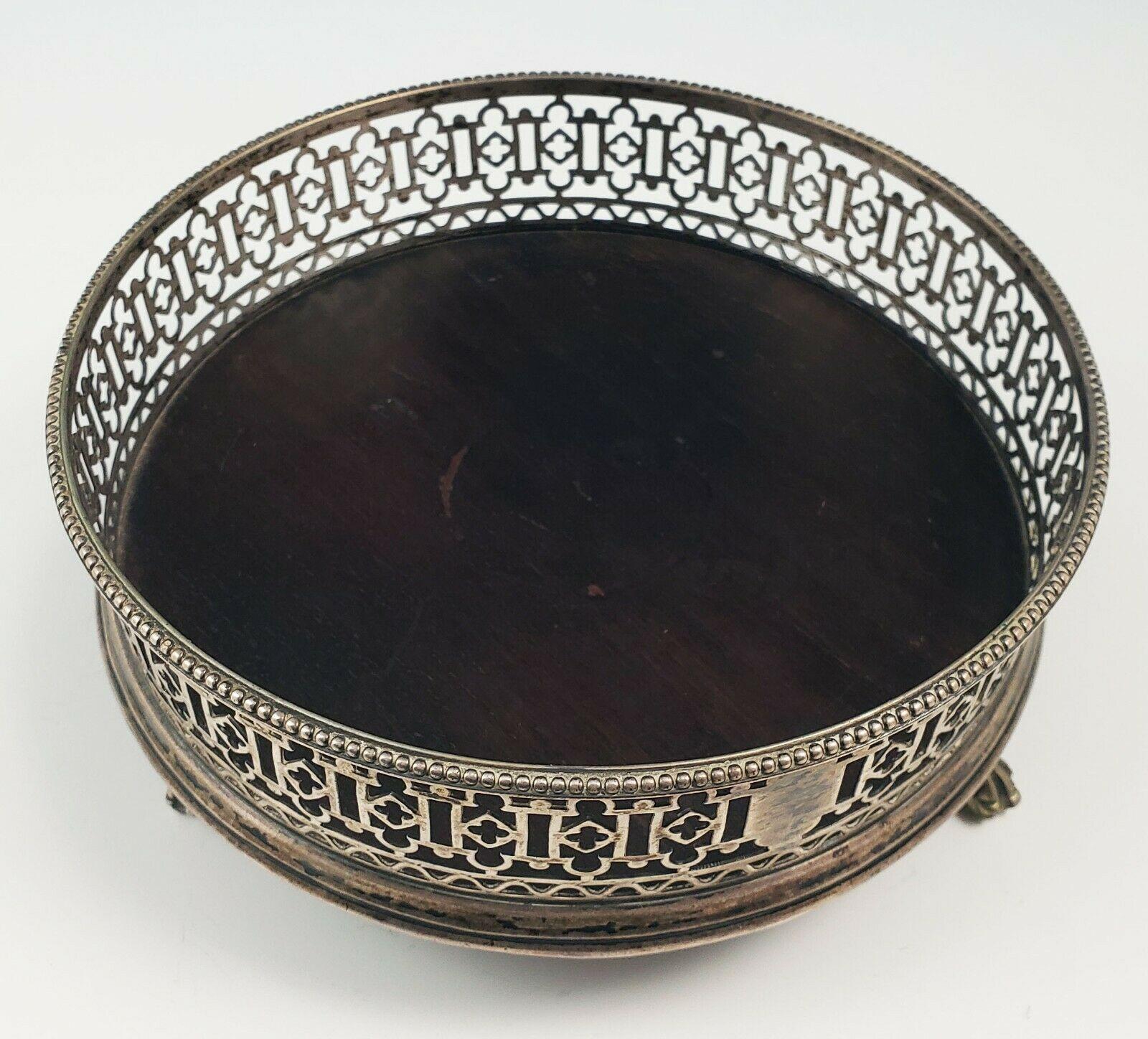
Cobalt Blue Inkwell in Sterling Silver Frame
| Categories | Early - Primitive, Glass - Non-figural, Silver |
| Material | Glass, Silver |
| Markings | See Narrative |
| Manufacturer | Robert Hennell I |
| Origin | England |
| Date or Era | circa 1776 |
| Measuring | 5 ½” diameter; 3 ½” high |
This 18th century inkwell combines thick, hand-blown glass with meticulously crafted sterling silver.
- Glass Body: The inkwell itself is made of thick, heavy cobalt blue glass. It is a testament to 18th-century glassmaking techniques, as evidenced by the polished pontil mark on its base. This mark is where the glassblower’s pontil rod was attached, and its polished state indicates an effort to smooth the baset. The top surface of the glass is ground and polished to a perfect finish, and is faceted with eight distinct panels that encircle the central opening.
- Sterling Silver Frame: The glass inkwell is held securely within a sterling silver frame. This frame is an example of Neoclassical Adam style, made popular by the architect and designer Robert Adam. The frame is not solid, but has a pierced, geometric design that allows the vibrant cobalt blue of the glass to be seen from the side.
- Hinged Silver Lid: A hinged sterling silver lid covers the opening of the inkwell. It is marked with the number L16815, which may be a pattern or inventory number.
- Base and Feet: The bottom of the inkwell is made of a dark wood. Attached to the wood are three “ball and claw” sterling silver feet. These feet are a classic design motif, particularly popular in Georgian-era furniture and decorative arts.
- Hallmarks and Provenance: The bottom edge of the silver frame is stamped with a set of four hallmarks, which serve as a record of its origin:
- Maker’s Mark: The “RH in oval” stamp identifies the maker as Robert Hennell I.
- Sterling Mark: The lion passant confirms the silver is of sterling quality (92.5% pure silver).
- Town Mark: The leopard head signifies that the piece was assayed (tested and hallmarked) in London.
- Date Letter Mark: The mark for 1776 pinpoints the exact year of manufacture.
Historical Context
This inkwell embodies the aesthetic and craftsmanship of the late Georgian period. The collaboration between a master silversmith like Robert Hennell and a skilled glassmaker resulted in a piece that was not only functional but also a symbol of wealth and taste. The Neoclassical Adam style, with its clean lines and geometric motifs, was a reaction against the more flamboyant Rococo style and reflects a return to the classical ideals of ancient Greece and Rome, which were in vogue in the mid-18th century.
Click this link to view a similar, but unmarked inkwell: Cobalt Blue Inkwell – The Society of Inkwell Collectors (SOIC)
Sold for $949 in December 2021
Content disclaimer. The information posted is the owner’s best knowledge and may not have been vetted by the SOIC. We welcome comments, corrections, and additions, working to make our website information comprehensive and accurate.
Join the Society of Inkwell Collectors (SOIC) – it’s free!
Founded in 1981 as a non-profit organization,
we are documenting inkwells (and accessories).
We’re here to help and inform!









